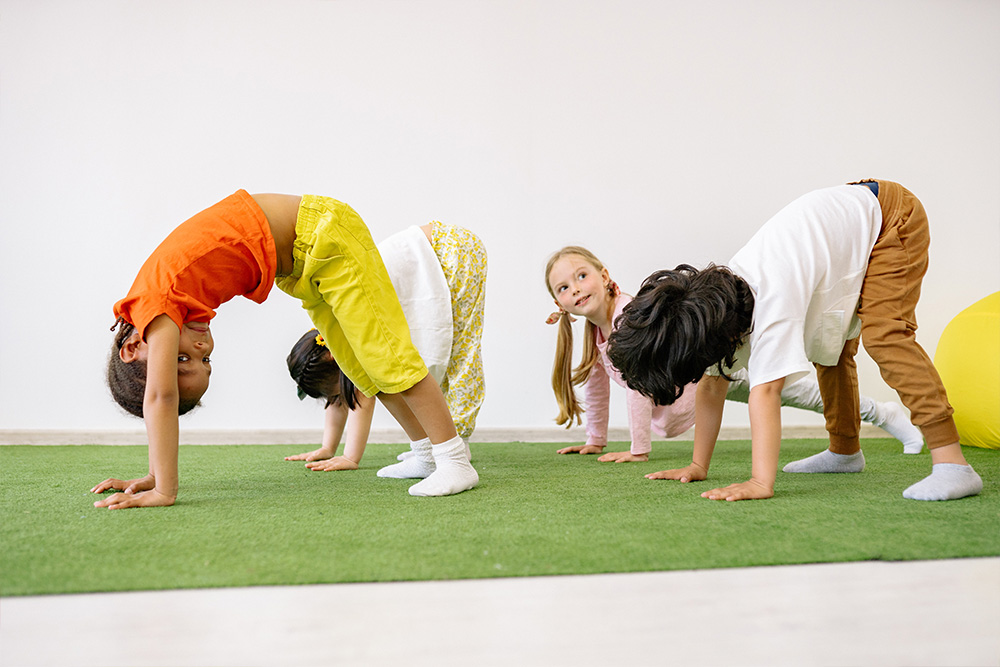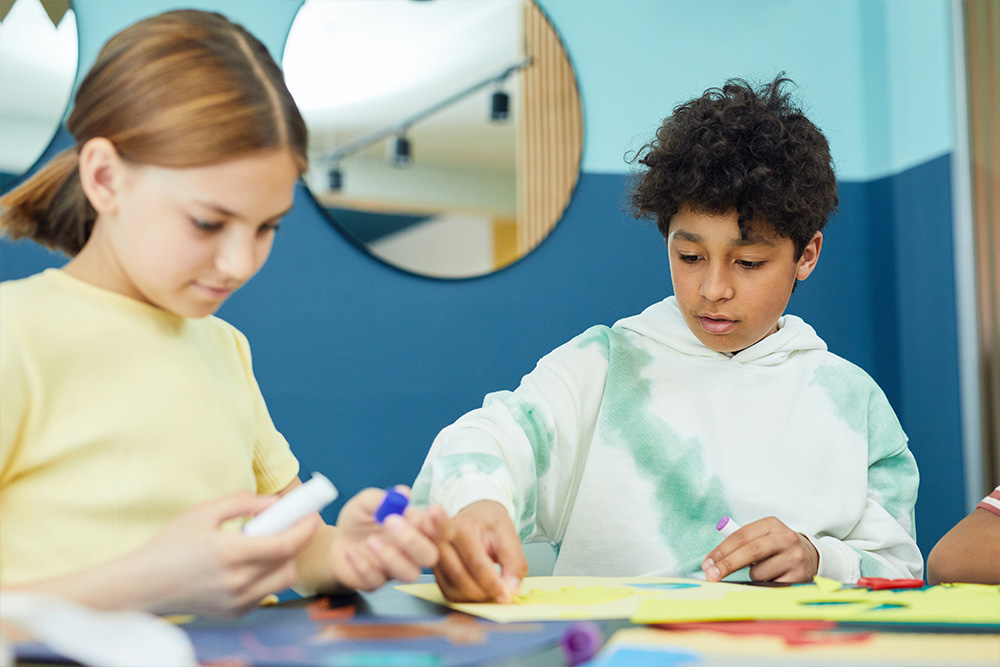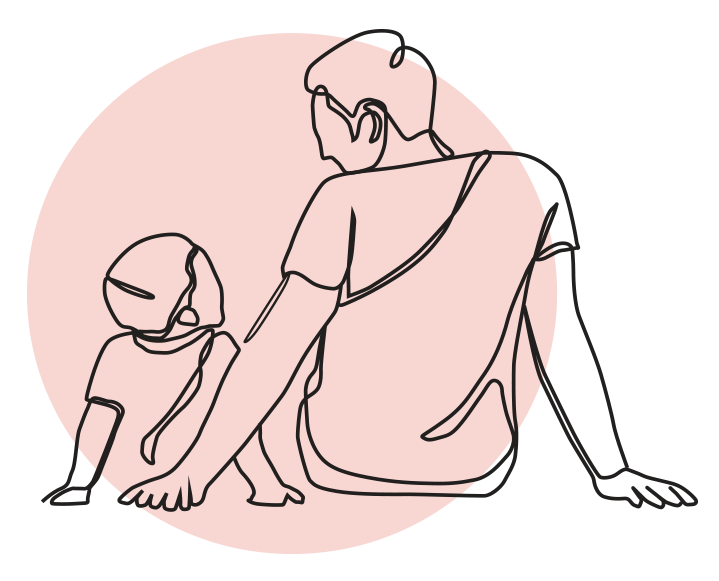Small people have big feelings. It’s normal for children to be overwhelmed by emotions regularly and they rely on us to soothe and bring them back to a state of calm. Think of babies and how often they need holding and comforting, toddlers who can dissolve into tears over the wrong colour pants and adolescents who explode when we say the ‘wrong’ thing.
Being the Container Your Child Needs
One of our jobs as a parent is to be a safe, tolerant place where our child can pour their frustration and confusion. In the therapy world, we call this being a ‘container’ for emotional outpourings. The idea is we start to shift our perspective so that instead of being battle grounds, these difficult times become opportunities to support the development of our children’s emotion regulation systems through co-regulation. It’s easy to say but in practice, when you are in the firing line it isn’t always easy to be that container. For a start, it requires feeling emotionally resourced yourself so that your emotional container doesn’t overflow.
Understanding Emotional Dysregulation
When children have ‘melt-downs’ which is another way of describing ‘emotional dysregulation,’ they need us to help soothe their stress response system and develop neural pathways through co-regulation. Most people do this instinctively when babies cry but find it harder when they start talking back! It can be tempting to try and dominate them by shouting louder or to calmly discipline them for ‘bad behaviour’ with ‘time out.’ If they are upset rather than behaving ‘badly’ we might focus on providing solutions to their problems. There is nothing wrong with consequence-based discipline or solving our children’s problems when they are distressed, but what if we are missing out on an opportunity to respond to the physiological dysregulation as well as the emotional communication?
Back to the Beginning

Babies are born with 200 billion brain cells but few connections, so it is impossible for them to self-regulate. What is less well known is that children’s brain pathways and connections are still being pruned and strengthened well into adolescence, so our emotional support is vital and continues to have a huge impact on the developing brain.
What happens in the brain of an emotionally overwhelmed child?
When children are emotionally overwhelmed, they behave in wild, uncontrollable ways because their higher brain (pre-frontal cortex) is completely offline. They lose the capacity to use reason, feel empathy or make connections. The ‘toddler tantrum’ is a classic case of the higher brain being ‘highjacked’ by deeper rage pathways. If we help children deal with their painful feelings (jealousy, disappointment, loss, frustration) rather than telling them off for the behaviour (which may well be horrible) then we can help their higher brain (prefrontal cortex) develop the nerve pathways needed to regulate these lower-brain triggered reactions in the long run. If (for example) we send them out of the room to calm themselves down for any length of time, we may be leaving them flooded with stress hormones and little capacity to make sense of their big feelings.
How do we soothe children once they’re too big to be held in our arms?
No one is too big for a cuddle and it can instantly reduce the heart rate and trigger positive hormones to balance the stress chemicals that have been triggered. But when your teenager or angry toddler does not want a cuddle, in fact when they are raging at you, it’s still possible to hold them emotionally, acting like a container for their overwhelming feelings.
“When little people are overwhelmed by big emotions, it’s our job to share our calm, not join their chaos.”
L.R. Knost, author
What does being a container look like?
As parents, we can become experts at sensing emotional overwhelm but it can be difficult to tolerate aggression when it’s heading in our direction. In fact, sometimes the intensity of our child’s reaction triggers an equally intense reaction in us. So there will be occasions when we just need to remove ourselves from the situation, focus on our breathing and slow our heartbeat before returning. Being a container can look like doing very little. Sometimes allowing the big feelings to be expressed in your warm, non-judgmental presence without offering a solution (I’ll get you another game) or minimising the feeling (it’s not the end of the world) is enough. Communicating comfort and acceptance can be very quiet and attentive. This is being a ‘container at its simplest and is often the hardest to achieve.

Non-verbal communication, like a hand on their arm or a soft expression, can make a huge impact. We need to resist the urge to add more noise to the moment or to go straight into criticising the behaviour. If we show that we are strong enough to survive their biggest feelings, they begin to feel safe in the world. By staying with the intense emotion and responding empathically when we do speak ‘I can see how angry and upset you are feeling.. it must have felt awful when…’ instead of jumping straight to consequences is like gently wrapping our arms around a raging baby.
What about disciplining a dysregulated child?
Dysregulated children often make ‘bad choices’ and there may need to be consequences for hurting others or breaking things. Even when disciplining, we can still be that safe, responsive person. In his book ‘No Drama Discipline’ Daniel J Siegel and Tina Payne Bryson say a mistake that even great parents make is to think that if we’re disciplining, we can’t be warm and nurturing, that somehow these two sides of parenting, the firm and the loving can’t co-exist. But they can. To be consistent and clear whilst being warm and compassionate is a great parenting goal. We can communicate that we love them and we get why they felt so angry but we’re still not happy that they hit their brother. Feelings are OK but hurting others is not.
Consider your capacity to self-regulate
Across the adult population our capacity to tolerate stress and regulate our emotions varies widely so taking the time to reflect on our ability to tolerate intense feelings is a good place to start. How did our parents respond to us when we were angry or upset? Do we automatically shout back if someone shouts at us? How do we tolerate day-to-day frustrations? What do we do to find our state of calm? Who is our container? Which adult is sensitive to our emotional needs and enables us to re-set when we are distressed? Taking time to self-regulate is key to being a safe container for our children. For more about this read our blog on parent mental health.
What are the long-term benefits of co-regulation?
It might seem counter-intuitive but our capacity to bear our children’s overwhelming emotions sets them up to be much better at healthy self-regulation as they grow up. If we attune to the emotion before responding to the behaviour, they also tend to recover quicker, having been allowed the space to feel the feeling and to physically regulate in your calming presence.
Through repeated experiences of co-regulation, children discover that big feelings can be scary and powerful but not too powerful to be held by their parents or carers. They are not alone with their overwhelming feelings and they are not controlled by them. Think of all the times in the future when this internalised message will reap rewards. It will shape the kind of partner they are drawn to, increase their capacity for empathy and give them the emotional strength to face challenges themselves when they step out into the world.
Here are some strategies you could try when your child is dysregulated.
- ‘Name it to Tame it’ (D. Siegel) – put your child’s feelings into words to help them do the same. When we name feelings, we begin to feel some control over them. E.g. ‘It looks like you are feeling really frustrated with that…’
- Don’t talk too much as they won’t hear it when dysregulated – if your child is feeling angry, try physical activities first to help them release tension, like pushing hard against a wall or punching a pillow.
- How about starting a ‘calm box’ with sensory objects your child likes to smell, stroke, squish or gaze at. Make it special to them with fabrics they like, photos/memories of happy times etc.
- ‘Blow it out of the window’ try blowing the stress out of the window with your child. As well as ‘letting go’ of the problem, it’s a way to encourage younger children to make long out breaths which slows the body and mind down.
Remember that your calm, containing presence is more powerful than any strategy.
If you are a parent or carer in need of advice on how to help your child with emotional regulation, our online therapists are here to help with the advice and tools you need. Book an Online Parent Consultation or get in touch with Chloe for more information.




